Solar eclipse of January 27, 2074
An annular solar eclipse will occur on January 27, 2074. A solar eclipse occurs when the Moon passes between Earth and the Sun, thereby totally or partly obscuring the image of the Sun for a viewer on Earth. An annular solar eclipse occurs when the Moon's apparent diameter is smaller than the Sun's, blocking most of the Sun's light and causing the Sun to look like an annulus (ring). An annular eclipse appears as a partial eclipse over a region of the Earth thousands of kilometres wide.
| Solar eclipse of January 27, 2074 | |
|---|---|
 Map | |
| Type of eclipse | |
| Nature | Annular |
| Gamma | 0.4251 |
| Magnitude | 0.9798 |
| Maximum eclipse | |
| Duration | 141 sec (2 m 21 s) |
| Coordinates | 6.6°N 78.8°E |
| Max. width of band | 79 km (49 mi) |
| Times (UTC) | |
| Greatest eclipse | 6:44:15 |
| References | |
| Saros | 132 (49 of 71) |
| Catalog # (SE5000) | 9673 |
Related eclipses
Solar eclipses 2073–2076
This eclipse is a member of a semester series. An eclipse in a semester series of solar eclipses repeats approximately every 177 days and 4 hours (a semester) at alternating nodes of the Moon's orbit.[1]
| 122 | February 7, 2073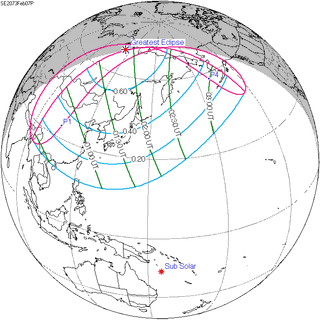 Partial |
127 | August 3, 2073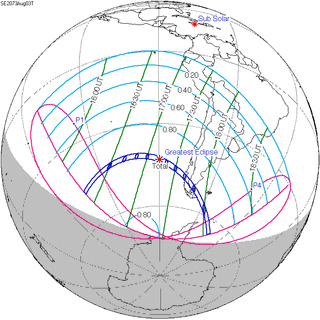 Total |
| 132 | January 27, 2074 Annular |
137 | July 24, 2074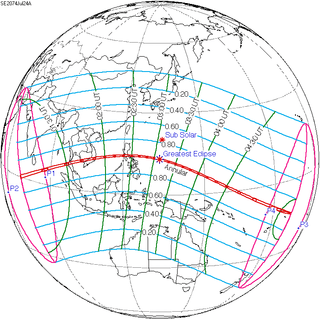 Annular |
| 142 | January 16, 2075 Total |
147 | July 13, 2075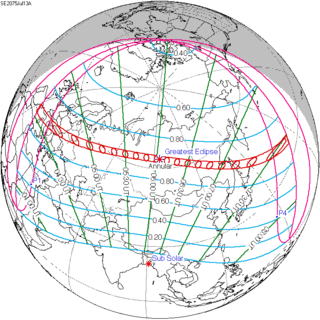 Annular |
| 152 | January 6, 2076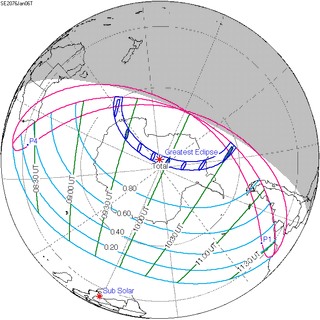 Total |
157 | July 1, 2076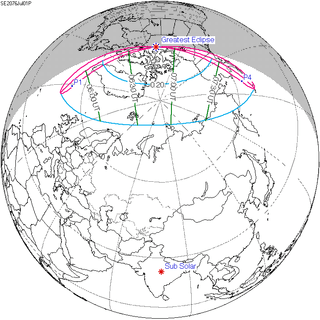 Partial |
gollark: Gimmicks? Like what?
gollark: And yes, zyus are evil.
gollark: The forums have been marginally more dramatic than usual in the past few days.
gollark: Eventually lineage builders will probably end up trying to get people to have aeons and bolts continually on cooldown.
gollark: Next update: TJ09 adds one...which *reduces* the chance of what you want occuring!
References
- van Gent, R.H. "Solar- and Lunar-Eclipse Predictions from Antiquity to the Present". A Catalogue of Eclipse Cycles. Utrecht University. Retrieved 6 October 2018.
External links
- Earth visibility chart and eclipse statistics Eclipse Predictions by Fred Espenak, NASA/GSFC
This article is issued from Wikipedia. The text is licensed under Creative Commons - Attribution - Sharealike. Additional terms may apply for the media files.
.jpg)
